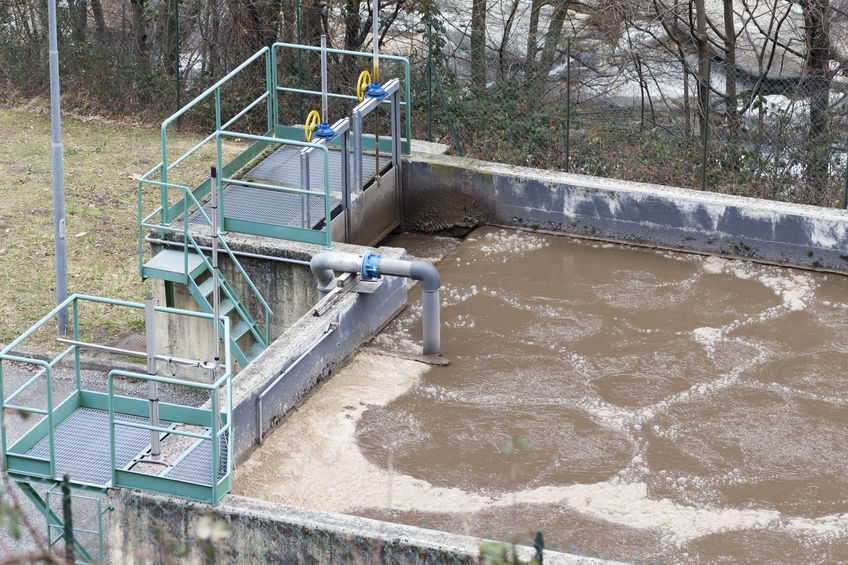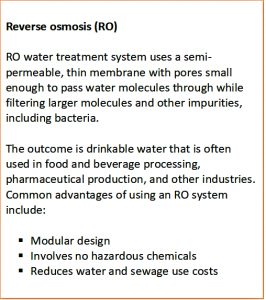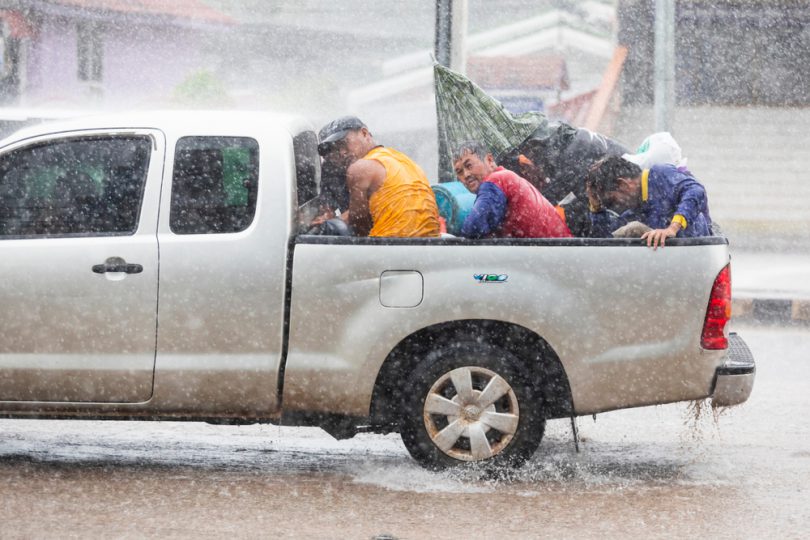MAE SOT DISTRICT, THAILAND
In 2012, torrential rains overflowed the Mae Sot Reservoir in Thailand, causing flash floods in more than 10 villages along the banks of the Moei River. Mae Sot District suffered its worst flood ever and the Mae Sot municipality was declared a state of emergency. The multi-million-dollar concrete ridge constructed without consulting the communities didn’t seem to help mitigate the disaster risk.
In 2014, the Global Water Partnership Thailand (GWP Thailand), supported by the Water, Climate and Development Programme (WACDEP), adopted a community-based approach to liaise with the authorities and the local communities, seeking to implement a sustainable community-based flood risk management. In the processes, the teams used the Geographic Information System (GIS) to create a map of vulnerable areas that was subsequently translated into risk reduction plans. They also educated the local communities about the natural water sources, the flows and the interconnected ecology.
The community approach opened multidirectional flows of knowledge among stakeholders, ensuring that science was available to local communities and that local communities’ knowledge was driving the design of municipal initiatives. The outcome is that Mae Sot’s population of at least 200,000 people became more prepared in mitigating risks, using information from the flood early warning system.
What this project shows is that community involvement can benefit public facility development; and that with a proper approach, we can mobilise people to participate in a disaster risk management. After all, the mitigations will spare local communities from economic losses and other undesirable outcomes, so people are naturally more willing to be involved in the processes.
Read: Flooding: Why cities in Southeast Asia need to be more resilient

Innovation can make high-cost water treatment technology affordable and accessible to communities in need
HLANG THAT YAR, MYANMAR
In May 2008, a severe storm hit Hlaing Thar Yar, an industrial city in Myanmar, leaving the communities stranded in poor conditions, with no access to clean water as the city was not equipped with proper waste and water management systems. Water had to be purchased to meet demands.
The Don Bosco School in HIaing Thar Yar, serving 350 children and parishioners through school programmes and religious activities, was in dire need of access to clean water. The only water source within reasonable proximity is its polluted saline ground water.
To address the problem, Dr Victor Sim with his team of engineers from NEWRIComm (Nanyang Environment and Water Research Institute (NEWRI), Singapore) started a project to design an innovative reverse osmosis (RO) water treatment system.

Conceptualised with the community in mind, Dr Sim made the commonly high-cost technology affordable and accessible. The project used the most economical and sustainable solutions for water management, while also considering simplicity, ease of maintenance and affordability. All this was an effort to allow the local community to manage the system in the long run.
Knowing that the locals did not have the technical knowledge for the maintenance, the team optimised the Internet of Things (IoT). The process engineers, along with civil, mechanical, electrical and instrumentation engineers, worked together to integrate sensors and solar power into the system. With this, maintenance has been manageable, monitoring can be done continuously, and operating expenses reduced.
With his innovative work in membrane technology, Dr Sim—currently the Head of Resiliency at Surbana Jurong—earned a prestigious international water and sustainability awards: World Federation of Engineering Organizations (WFEO) 2018 Young Engineers Competition.
Also read: Low impact development (LID): A stormwater management system
What we can learn from the project is that engagement with local authorities and community is likely to result in a positive outcome. The Don Bosco School was eventually in-charge for the operations and maintenance of the RO treatment system. There was even a business model to make the system self-sustained through a subsidised sale of water.
But then one might ask to what extent is this kind of project sustainable; or whether it leaves a long-term impact. In April 2020, a global development community platform, Devex, listed a submission bid of 50 prefabricated fibreglass water tanks for 2,000-litres capacity to the UNICEF Hlaing Thar Yar warehouse. While it may or may not be for the continuation of the school water project, the procurement surely means that the water management systems’ improvement in Hlaing Thar Yar is successful. – Anisa Pinatih; Construction+ Online
Disclaimer: Construction+ makes reasonable efforts to present accurate and reliable information on this website, but the information is not intended to provide specific advice about individual legal, business, or other matters, and it is not a substitute for readers’ independent research and evaluation of any issue. If specific legal or other expert advice is required or desired, the services of an appropriate, competent professional should be sought. Construction+ makes no representations of any kind and disclaims all expressed, implied, statutory or other warranties of any kind, including, without limitation, any warranties of accuracy and timeliness of the measures and regulations; and the completeness of the projects mentioned in the articles. All measures, regulations and projects are accurate as of the date of publication; for further information, please refer to the sources cited.
Hyperlinks are not endorsements: Construction+ is in the business of promoting the interests of its readers as a whole and does not promote or endorse references to specific products, services or third-party content providers; nor are such links or references any indication that Construction+ has received specific authorisation to provide these links or references. Rather, the links on this website to other sites are provided solely to acknowledge them as content sources and as a convenient resource to readers of Construction+.

 Malaysia
Malaysia Hong Kong
Hong Kong Singapore
Singapore Indonesia
Indonesia Tiếng Việt
Tiếng Việt









